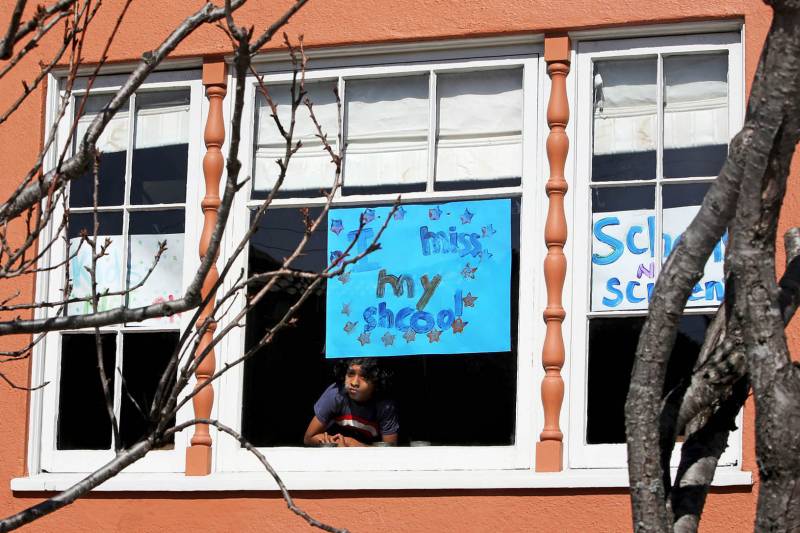The Centers for Disease Control and Prevention has updated its guidance for schools. On Friday, the agency announced it "now recommends that, with universal masking, students should maintain a distance of at least 3 feet in classroom settings."
Previously the guidance stated, "Physical distancing (at least 6 feet) should be maximized to the greatest extent possible." The new guidelines still call for 6 feet of distance between adults and students as well as in common areas, such as auditoriums, and when masks are off, such as while eating. And the 6-foot distancing rule still applies for the general public in settings such as grocery stores.
The change is momentous because in many places around the country, the 6-foot guidance has been interpreted as requiring schools to operate on part-time or hybrid schedules to reduce class sizes. A 3-foot rule would allow many more schools to open in person full time.
The revision was spurred by some new research, including a study published in the journal Clinical Infectious Diseases on March 10,which looked at schools in Massachusetts, where districts were given a choice of distancing students either 6 or 3 feet apart. The study included more than half a million students who attended school in-person last fall.
"We didn't see any substantial difference in cases among students or staff in districts with 3 feet versus 6 feet, suggesting that we can open the schools safely at 3 feet, provided that some of the mitigation measures that were present here in Massachusetts are in place," says Westyn Branch-Elliman, a co-author of the study and an infectious diseases specialist at Beth Israel Deaconess Medical Center. "Our study adds to a growing body of worldwide data about the safety of 3 feet in school settings."



9(MDAxOTAwOTE4MDEyMTkxMDAzNjczZDljZA004))